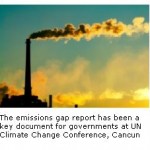
Brussels – The European Commission welcomed vote of January 21 by Member States to ban from use in the EU Emissions Trading System (EU ETS) emission offset credits from certain projects which destroy industrial gases. Essentially, the ban means that companies will be able to use these credits for 2012 compliance under the EU ETS until 30 April 2013, but not thereafter.
Connie Hedegaard, Commissioner for Climate Action, said: “I very much welcome the Committee’s decision to back this Regulation, less than 5 months after I first proposed the idea. These projects raise concerns relating to their environmental integrity, value-for-money and geographical distribution. Not only are some of these credits of doubtful value, continuing to use them is also not in the EU’s interest as doing so could discourage host countries from supporting cheaper and more direct action to cut these emissions. Our aim is not to reduce the number of credits available but to ensure the international carbon market is based on a better quality and distribution of credits.”
The EU Climate Change Committee, which brings together representatives of the 27 Member States, voted for the ban on February 21 on the basis of a proposal tabled by the Commission last November.
The ban will apply to projects which destroy two industrial gases: trifluoromethane (HFC-23) produced as a by-product of chlorodifluoromethane (HCFC-22) production, and nitrous oxide (N2O) from adipic acid production. HFC-23 and N2O are both powerful greenhouse gases which contribute to climate change.
Just 23 such industrial gas projects account for two-thirds of all the credits generated through the Kyoto Protocol‘s Clean Development Mechanism (CDM). Most such projects are undertaken in China and other advanced developing countries. The ban on the use of such credits in the EU ETS will apply to all such projects undertaken under the CDM as well as any undertaken in developed countries through Kyoto’s Joint Implementation mechanism (JI).
What is the Problem?
The acceptance of credits from industrial gas projects has been controversial for some time. The main concerns are:
- Allowing credits from the destruction of HFC-23 can create a perverse incentive to continue to produce or even increase production of it and of HCFC-22, a gas which both depletes the ozone layer and is also a powerful greenhouse gas.
- This contradicts the Kyoto Protocol rule that credits may come only from projects which lead to emission reductions that are additional to what would have happened anyway. The environmental integrity of the credits is, therefore, questionable.
- It also undermines attempts under the Montreal Protocol on protection of the ozone layer to implement an accelerated phase-out of HCFC-22 for non-feedstock use and to consider financing the destruction of HFC-23 on the basis of its actual cost per tonne, which is far lower than the current market value of CDM credits.
- These projects do not provide value for money as they could have been funded and implemented more cost-effectively by other means. Because of the credits they receive, the rates of return are exorbitant – revenues from the sale of HFC-23 credits to EU ETS participants can represent up to 78 times the initial capital investment and operational costs of the project.
- The EU considers that emission reductions which can be achieved relatively cheaply – as with destruction of HFC-23 from HCFC-22 production and N2O from adipic acid production – should not be financed through the international carbon market. They should be undertaken by developing countries themselves as part of efforts to reduce their own emissions. Alternatively, the actual per-tonne cost of reductions could be directly funded.
- The high proportion of CDM credits generated by the small number of industrial gas projects distorts the geographical distribution of CDM projects in favour of a limited number of advanced developing countries. This contradicts the goal, strongly supported by the EU, of getting a more balanced spread of CDM projects across the developing world, in particular by increasing the involvement of Least Developed Countries (LDCs).
In addition to these specific concerns, the EU wants to see the CDM progressively phased out for the advanced developing countries. It should be replaced by new mechanisms that would cover whole sectors and thus tap much greater potential for emission reductions than the project-based CDM. Unlike the CDM, these sectoral mechanisms would generate international credits only if the sector achieved a pre-determined emissions performance threshold. The existing EU legislation already provides that credits from new projects registered after 2012 can only be used in the EU ETS if the projects are located in Least Developed Countries (except where otherwise agreed through future international or bilateral climate agreements).
Next Steps
The European Parliament now has three months to comment on the proposal, after which the Commission will formally adopt it. The restrictions will apply from 1st May 2013, giving market participants sufficient time to adapt.
Background
The CDM enables governments and companies in developed countries to invest in emission-saving projects in developing countries in return for credits which can be used to offset their own emissions. The JI mechanism does the same, except that JI projects are undertaken in developed countries.
Source: Europa Press Release dated January 21, 2011.














